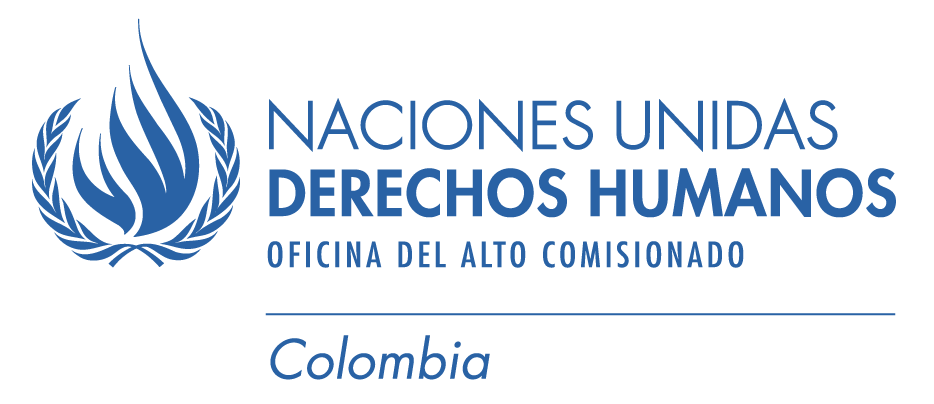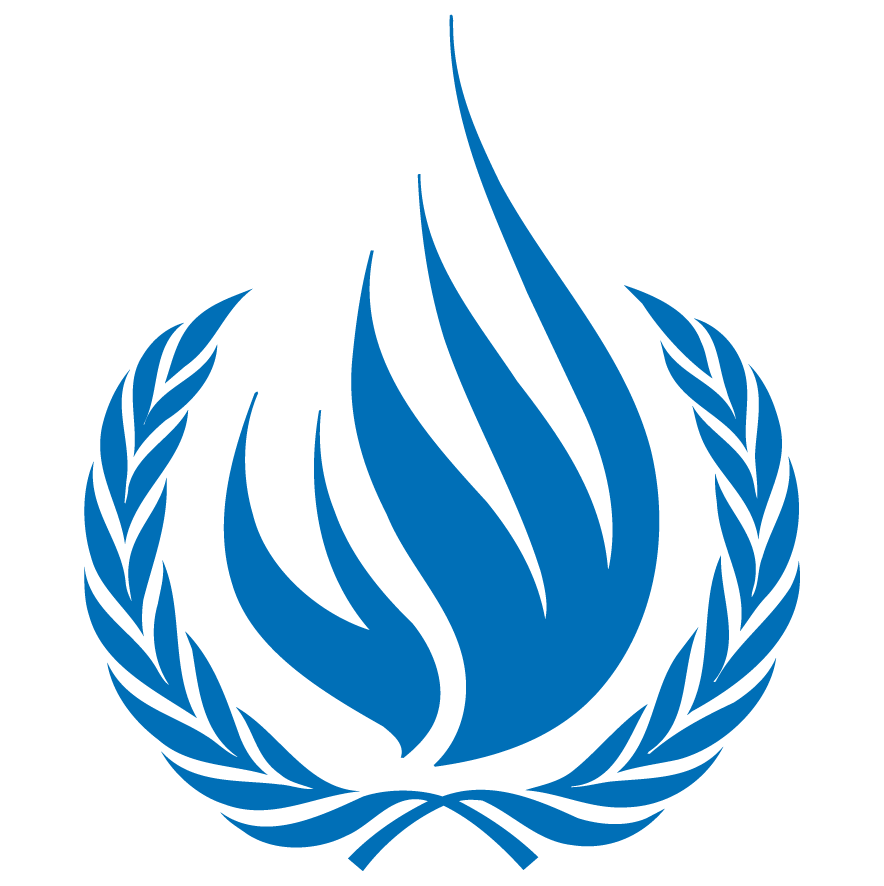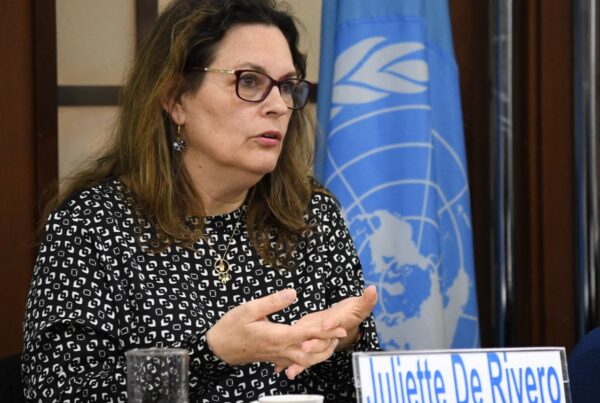The United Nations is convinced that a negotiated political solution is the best answer to the armed conflict. For this reason, it has urged the parties repeatedly to redouble their efforts and to continue with dialogue and negotiations aimed at achieving a firm and lasting peace.
In this respect, and without wanting to hinder or minimize the important topics that have been agreed on as the agenda for negotiations, it is fundamental that the parties establish and consolidate clear commitments to guarantee respect for human rights and to reduce the drastic effects of the armed conflict on the Colombian population.
In Colombia, the term “human rights agreement” has often been used when referring to agreements that require the parties, particularly the guerrillas, to comply with their obligations and respect the civilian population. Nevertheless, this is not exactly what international humanitarian law means by a humanitarian agreement or “special agreements”.
This document makes some important clarifications and distinctions before explaining the proposal for a Comprehensive Agreement on Human Rights and International Humanitarian Law, including its contents, purpose, and objectives.
To begin with, it is important to emphasize that a humanitarian or special agreement is one framed by Article 3 common to the four Geneva Conventions, which states the following: “Moreover, the Parties to the conflict should further endeavor to bring into force, by means of special agreements, all or part of the other provisions of the present Convention. “ Please bear in mind that these four conventions contain rules on international conflicts and that Article 3 was the only one, prior to the adoption of Protocol II, that referred to the minimum rules applicable to armed conflicts of a non-international nature, such as the one in Colombia. In this sense, the objective of these special or humanitarian agreements is to broaden the framework of obligations and protection for the civilian population or to enhance the effectiveness of the obligations foreseen.
The idea is not to divide up or to reduce the scope of protection and to be satisfied with demanding that only certain obligations or only a portion of the civilian population be respected. Apart from the law that regulates war, the behavior of combatants and the weapons and means of combat employed in internal conflicts, negotiations embrace many aspects concerning the validity of the fundamental rights of individuals and the building or reinforcement of a democratic state guided by the rule of law.
A Comprehensive Agreement on Human Rights and International Humanitarian Law seeks to consolidate the parties’ commitment to their obligations and covers commitments to IHL, in relation to the war itself, and to human rights as well, which the State is obliged to respect and guarantee, even in the context of an armed conflict.
In a negotiation process, a Comprehensive Agreement on Human Rights and International Humanitarian Law is the backbone of, or foundation upon which a peace agreement can be constructed. It is signed by the parties at the bargaining table to facilitate the path to peace and to lend credibility and legitimacy to the process.
Therefore, the commitments assumed refer to respect for international humanitarian law on the part of all armed actors, as well as measures to protect and observe human rights, for which the State is responsible. In a situation where the conflict has clearly deteriorated, protection of people’s rights to life and to personal safety is an obvious concern.
Accordingly, the question of observance of human rights and international humanitarian law is an urgent one and, therefore, must be addressed as a priority. The office has insisted repeatedly in recent months on the need to seriously discuss the signing of a COMPREHESIVE AGREEMENT ON HUMAN RIGHTS AND INTERNATIONAL HUMANITARIAN LAW. This call was taken up again last year, and reiterated this year in the Declaration by the Chairman of the United Nations Commission on Human Rights, and by the United Nations High Commissioner for Human Rights and the Secretary General himself.
In that context, the Chairman of the United Nations Commission on Human Rights asked this year, in Geneva, that guerrilla groups and the Colombian government “reach a Comprehensive Agreement on Human Rights and Humanitarian Law to pave the way for a full cease-fire as the first step toward a peace agreement.”
To specify more the scope of this instrument, we must ask ourselves what we mean by a Comprehensive Agreement on Human Rights and International Humanitarian Law. To begin with, it is a proposal that suggests a comprehensive approach to the subject of human rights and the humanitarian crisis in Colombia. On the other hand, it emphasizes the obligations particular to the State and ultimately underscores the obligation of all parties in the conflict to respect and protect the civilian population by excluding them from the hostilities.
It is important to emphasize that international rules and obligations may not be negotiated in an agreement of this type or in any humanitarian agreement. International law demands respect for these rules, the beneficiaries of which include all people. Therefore, the parties may not take it upon themselves to decide on rights that are addressed not to their own interests but to the protection of all people and to the common good.
International experiences sponsored by the United Nations have succeeded in working out, on the basis of similar agreements, a timetable of steps and results that have allowed for tangible progress towards stabilizing and structuring processes for dialogue and peace. The Guatemalan experience, to mention only one of the more recent and well-known experiences, demonstrates the advantage of discussing respect for human rights and international humanitarian law as a priority issue.
Establishment of the Comprehensive Human Rights Agreement almost seven years after peace talks were begun within the scope of the Second Esquipulas Agreement accelerated discussion of the other topics and, therefore, signature of the other agreements included on the agenda for negotiations. This culminated in a firm and lasting peace agreement signed in December 1996. Furthermore, the almost immediate adoption of an international mechanism to verify the Comprehensive Agreement helped to generate confidence between its parties during the two years before the peace agreement was signed.
THE BASIC CONTENTS OF A CAHR/IHL
This document more than a specific proposal for an agreement, which is up to the parties at the bargaining table, suggests some fundamental aspects that have been part of similar agreements.
For no other purpose than to illustrate what an agreement of this type can include, this document refers to recent experiences in El Salvador and Guatemala. In both cases, some of the topics that were included proved to be of considerable importance, not only in terms of improving respect for human rights and international humanitarian law but, as indicated earlier, to pave the way for the successful culmination of the negotiating process.
It is worth reiterating that the positive results of these experiences do not mean they should be duplicated automatically in the Colombian case. They can, however, be used to guide discussion on the topic.
Provisions for Human Rights
The agreement must be intended to broaden and guarantee full exercise of the population’s human rights and civil liberties. Therefore, none of its provisions may be interpreted in a restrictive way, or in detriment to the rights and liberties set forth in the Constitution, in international agreements or in any other relevant legal instrument. Consequently, they neither substitute nor limit any obligations the parties may have as a result of international agreements or treaties on the subject.
In other agreements, the government has reaffirmed its adherence to the principles and norms established to guarantee and protect full observance of human rights, and its political willingness to command respect for these rights. By the same token, it has agreed to continue to encourage all measures designed to promote and improve the rules and mechanisms established to protect and guarantee human rights.
Provisions on International Humanitarian Law
An agreement on this subject cannot reduce the parameters established in Article 3 common to the Geneva Conventions and in Protocol II. Consequently, an agreement on international humanitarian law cannot be limited to issues that are already mandatory (an agreement on basics).
Being clear about the starting point, any agreement that seriously addresses IHL must contain provisions for specific measures to regulate the armed conflict through effective observance of established rules on the way hostilities are conducted and on protection for the civilian population.
On the other hand, it can include action that is not mandatory under current regulations but helps to humanize the conflict and, therefore, to broaden the protection afforded under Article 3 common and Protocol II. Specific mechanisms may be agreed on to comply with rules or regulations and to improve protection for the civilian population.
Other Commitments
Although it has already been stated above that it is the parties that decide on the contents of a Comprehensive Agreement on Human Rights and International Humanitarian Law, the experience in El Salvador and Guatemala included commitments on the following topics and more or less in these terms.
Impunity: A commitment from the government not to favor the adoption of legislative measures or any others aimed at preventing those responsible for violations of human rights from being tried and punished.
Justice: Assurance that no special exemption or exclusive jurisdiction will serve as an excuse for impunity in cases of human rights violations.
Self-defense Groups: Establishment of clear provisions to end illegal or clandestine security forces.
Protecting Defenders of Human Rights: Agreement on the adoption of special protective measures for people or organizations working in the field of human rights, and a commitment to guarantee and effectively protect the work of individuals and organizations dedicated to the defense of human rights.
Redress: The obligation to compensate and/or aid victims of human rights violations through government measures and programs of a civil and socio-economic nature is reaffirmed.
Verification
International experience shows that all the agreements have been accompanied by appropriate means of verification, whether national, international or both. A clear definition of the functions and attributes of verification mechanisms has facilitated proper monitoring of compliance with the commitments assumed by the parties.
The proposal for a new nation discussed at the negotiation table must not be erected on the bodies of the thousands of Colombians whose lives are claimed each year as result of massacres, selective homicide or attacks on villages and towns. The displaced Colombian, who bears the mark of the horrors suffered in this fratricidal war, must be given back the hope of life and dignity, in order to eventually participate in building a more just and inclusive nation. A Comprehensive agreement such as the one being proposed would lay the foundation for observance of the minimum ethical values required to transform the hopes and dreams of Colombians into a reality framed by a just and inclusive state guided by democratic law.
https://hchr.hrev.org/wp-content/uploads/2001/02/po0105.pdf






